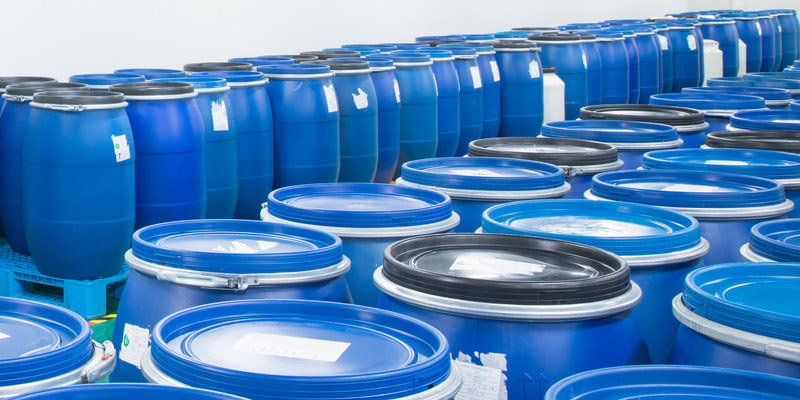The mechanism of action of inorganic pigments
The basic optical and pigment properties of inorganic pigments are mainly determined by the following three aspects
① The difference in refractive index between pigments and dispersing media;
② Light absorbed by solids (including impurities in solids);
③ Particle size and particle size distribution. The particle size and particle size distribution can be improved through surface treatment.
In the process of pigment production, no matter how fine the pigment powder is ground, it will always contain some aggregated and flocculent particles. During transportation and storage, pigments will further agglomerate into large particles due to compression and moisture. Moreover, the finer the pigment, the larger its surface area, and the higher its surface energy, the easier it is to agglomerate together. If treated with appropriate surfactants, these flocculated large particles can be easily dispersed during use, and their dispersion mechanism is mainly as follows:
1. Wetting
The dispersion of inorganic pigment powder in liquid mainly goes through the following three stages:
① The wetting of powder, liquid not only needs to wet the surface of the powder, but also needs to displace the air and moisture between the powder particles;
② After wetting the powder and displacing the air and moisture between particles, the agglomerates and aggregates in the pigment powder are destroyed;
③ Wet and damaged flocs and aggregate powders maintain a stable dispersed state in liquid. That is to say, dispersion is the process of wetting dispersing maintaining the stability of the dispersion.
In general, inorganic pigments are rarely dried before use, and the surface of the pigment not only contains air but also adsorbs a layer of water film. The amount of water typically adsorbed on the surface of pigments is equivalent to the amount of water required to form a monolayer on a solid surface. For example, with a surface area of 10m2 per gram of TiO2 and a water molecule adsorption layer thickness of 10 × 10-10m, the amount of water required for a monolayer is about 0.3% of the weight of the pigment. Therefore, the moisture content in the pigment is also one of the main factors affecting its dispersibility. The wetting of a solid can be judged based on its contact angle. A contact angle of 0 ° indicates complete wetting, and the liquid is completely distributed on the surface of the solid; A contact angle of 180 ° indicates complete non wetting, and the liquid adheres to the surface of the solid in the form of water droplets.
Whether a solid can be well wetted in a liquid can be judged not only by the size of the contact angle, but also by the magnitude of its wetting heat. Generally, hydrophilic powders (such as TiO2) have a higher wetting heat in polar liquids and a lower wetting heat in non-polar liquids, while hydrophobic powders have a roughly constant wetting heat in polar and non-polar liquids.
The settling velocity and settling volume of solid powders in liquids can also determine their degree of wetting. Solids with high polarity, such as TiO2, have a smaller settling volume in solutions with high polarity and a larger settling volume in solutions with low polarity; Non polar solid powders generally have a larger settling volume. After treatment with surfactants, the strong directional adsorption of surfactant molecules on the surface of solids helps to reduce the surface tension of liquids and improve their wetting and dispersing properties.

2. Electric repulsion (ξ potential)
The dispersion and dispersion stability of inorganic pigments in aqueous solutions mainly depend on their electric repulsion in water, i.e. the magnitude of the zeta potential.
Electric repulsion is the use of charge repulsion to maintain dispersion stability.
Surfactants can ionize a large number of negatively (or positively) charged ions in aqueous solutions, firmly adsorbing on the surface of pigment particles, making these particles carry the same charge, while other ions with opposite charges freely diffuse around the liquid medium, forming a diffusion layer (double layer) with ionizers. The potential difference between two layers of ions from the solid surface to the farthest point of the diffusion layer (i.e., the area with opposite charges of 0) is called the zeta potential. The electrostatic repulsion between particles arises from this, where particles with the same charge repel each other upon contact, thus maintaining the stability of the dispersed system, known as the famous D.L.V.O. theory.
In the case of electric repulsion, surfactants must have high ionization performance, usually using anionic surfactants and some inorganic media such as tripotassium polyphosphate, potassium pyrophosphate, sodium polyphosphate, sodium alkyl aryl sulfonate, sodium methylene naphthalene sulfonate, sodium polycarboxylate, etc.
3. Spatial hindrance effect (or entropy effect)
When pigments are dispersed in non-aqueous media, the possibility of ion reactions mentioned above is greatly eliminated. Non ionic surfactants do not ionize in water, and in this case, the effect of surfactants is called steric hindrance or entropy effect. Because surfactants can selectively adsorb onto the surface of pigment particles, forming a single-molecule adsorption layer, this oriented buffer layer can prevent particle aggregation and maintain the stability of the dispersion system (also known as protective colloids or micelles).
As the concentration of surfactants on the surface of pigments increases, their entropy decreases and their movement is restricted. The closer and more compressed the pigment particles are, the further their entropy decreases, which is beneficial for the stability of the dispersion system.

